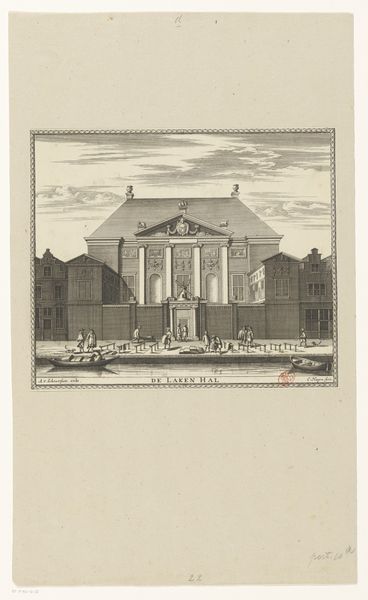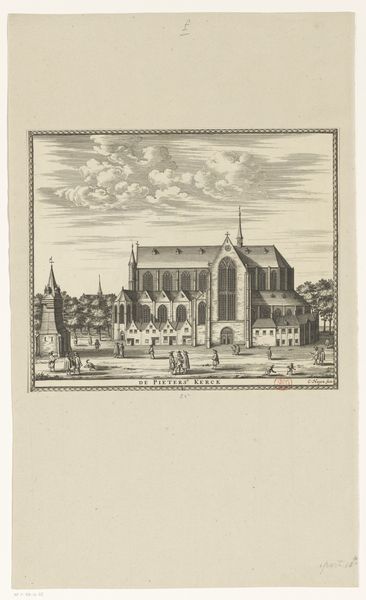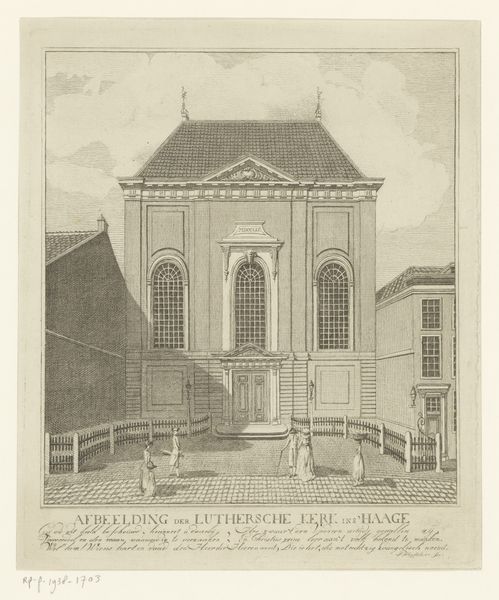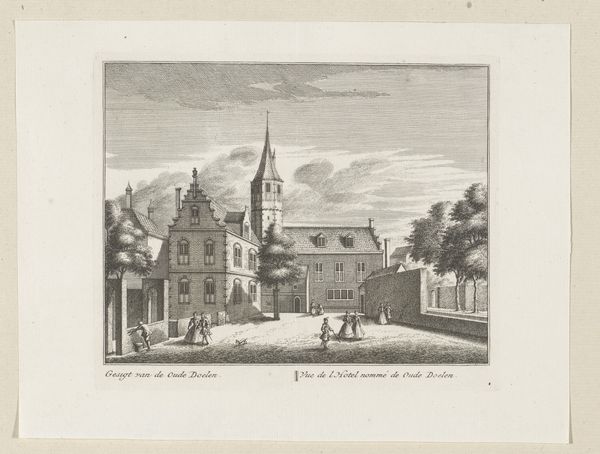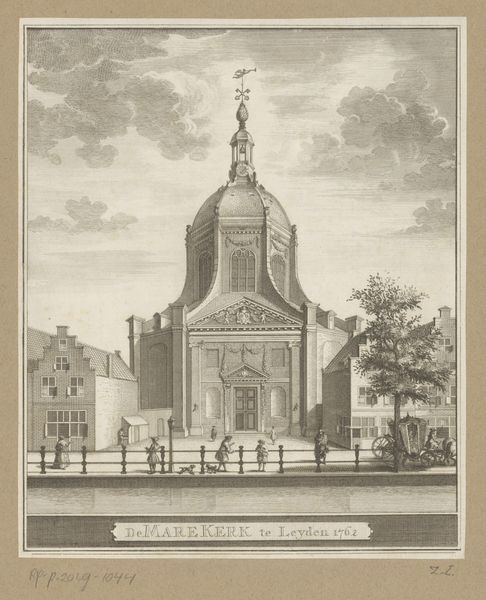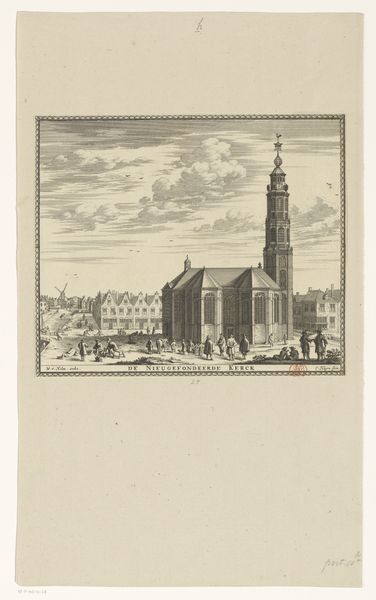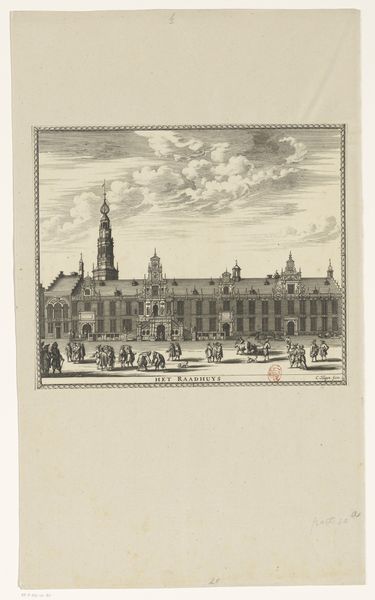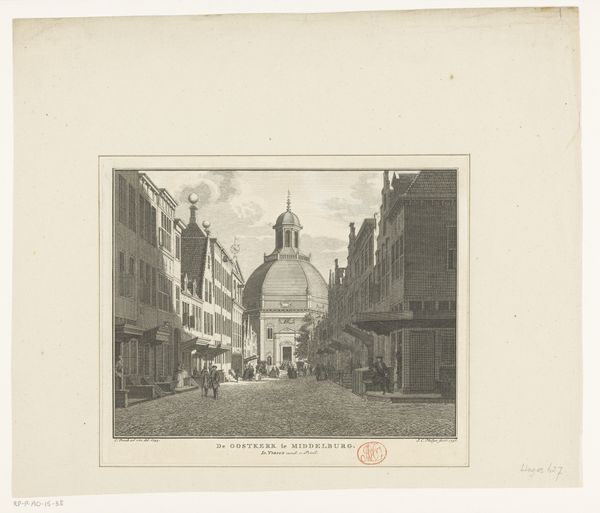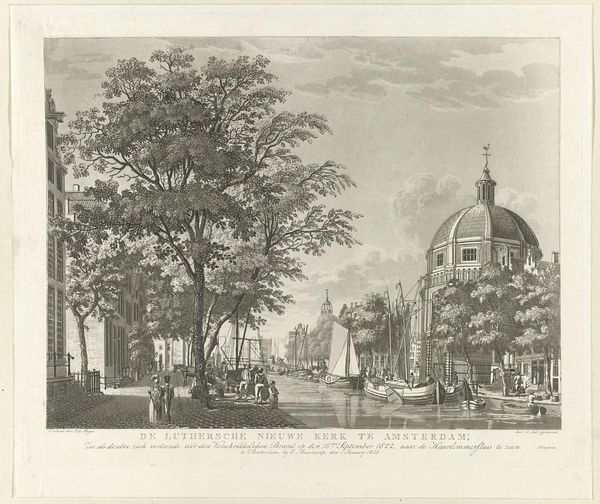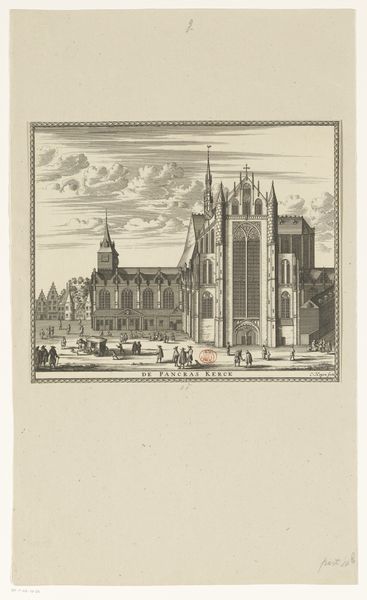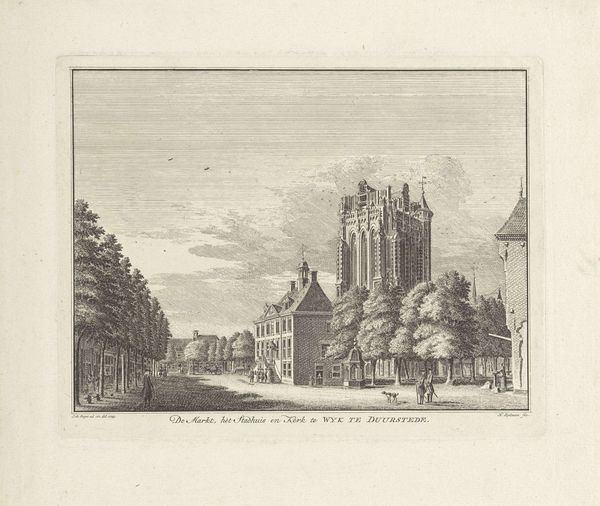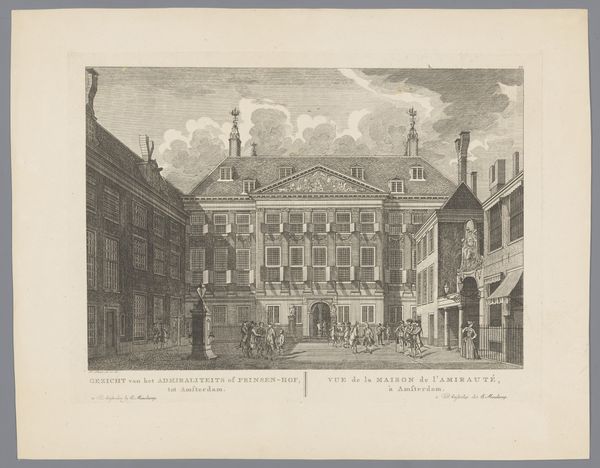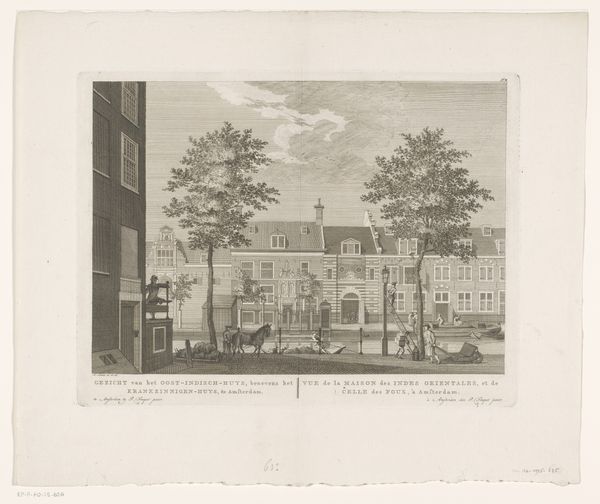
print, engraving, architecture
#
baroque
# print
#
cityscape
#
engraving
#
architecture
Dimensions: height 250 mm, width 296 mm
Copyright: Rijks Museum: Open Domain
Curator: Looking at this engraving from 1675, "Rand van de Grote Hagen", specifically the "side panel" focusing on "De Maren Kerck", what strikes you? Editor: Well, first, I love how contained it feels, like peering into a tiny, perfect world. The intricacy, the sheer detail...it's mesmerizing. Does baroque architecture always have to have the same feel, formal, rigid but so beautiful to contemplate. Curator: In a lot of ways that containment, that control, is the essence of the Baroque. There’s a pushing against the Renaissance ideal but retaining a bit of order. That building in this print, created with such precision, serves a symbolic purpose too, demonstrating power of religion over cities and over lives. You know, it's fascinating how printmaking in this era became a kind of public relations for civic projects. Editor: PR, huh? Interesting. To me, those wispy clouds look like they're about to burst with rain and I almost imagine the hustle and bustle along the square as people ran indoors. Do we know why this image was printed? Curator: Probably to commemorate or celebrate its construction or significant renovation. Prints like this weren’t just artistic statements. The piece was also an accessible medium for conveying urban development—a visual declaration of progress and prestige distributed widely, reflecting the aspirations of both the church and the city of that era. Editor: It's strange to see what a major piece of architecture can represent when shrunk down this much. There's such vulnerability of rendering it by hand versus, say, just snapping a picture. Curator: Exactly! It allows people a new, fresh understanding and appreciation for city landmarks. That human element brings the whole landscape to life somehow. We're left with an idea but also this interpretation and almost a sense of yearning. Editor: So well put, a sense of yearning. Yes, seeing this Baroque piece through a personal lens makes you reflect about our shared history—which might have always had both stability and transience. Curator: Indeed. Looking at it this way highlights its lasting impact on our culture.
Comments
No comments
Be the first to comment and join the conversation on the ultimate creative platform.
